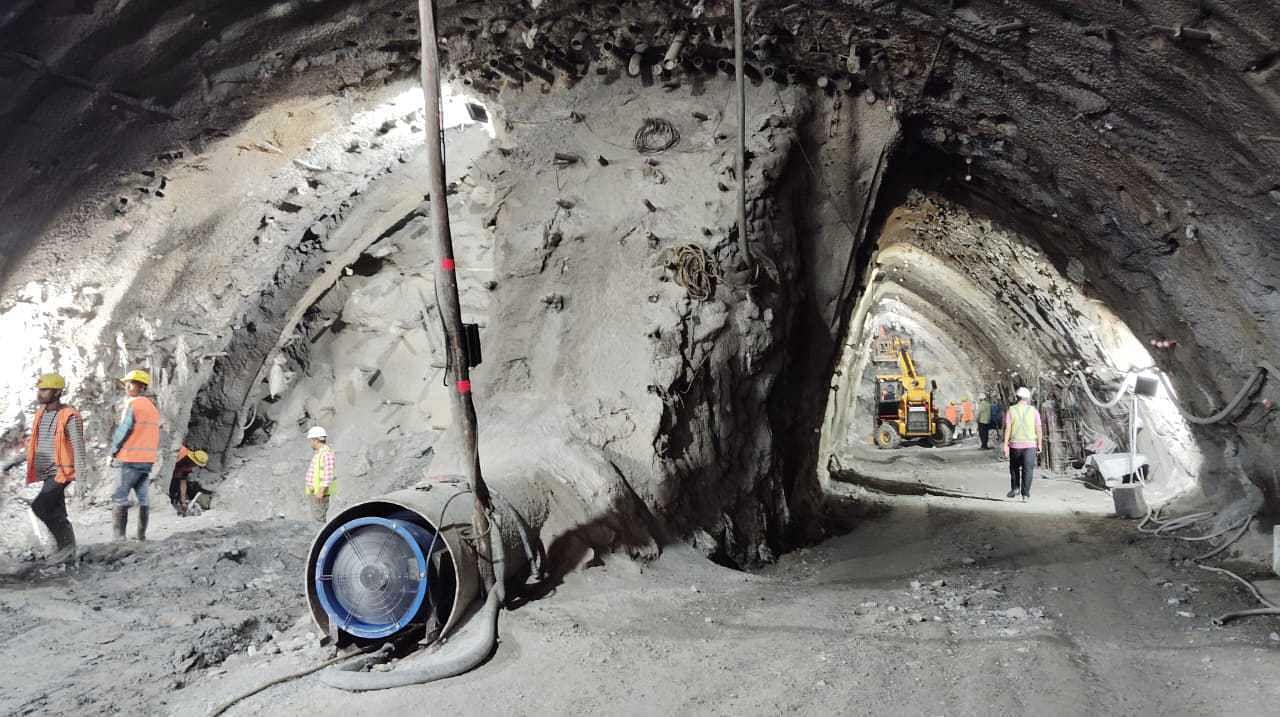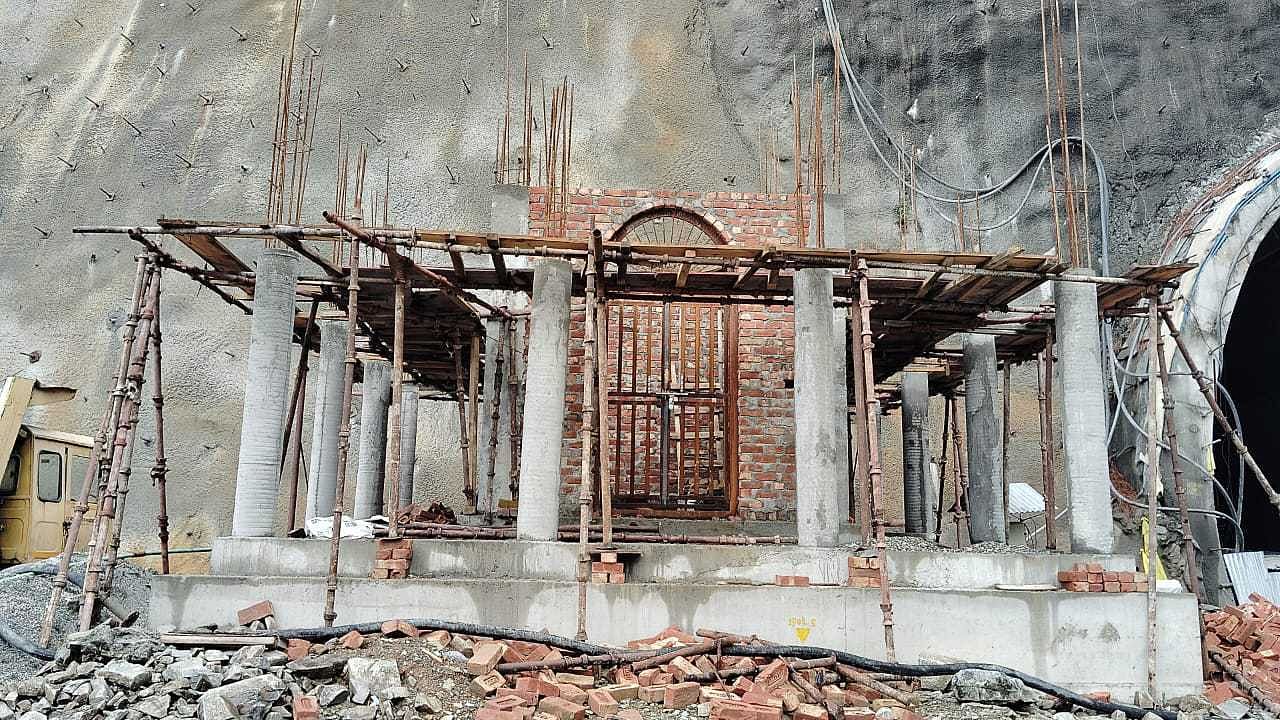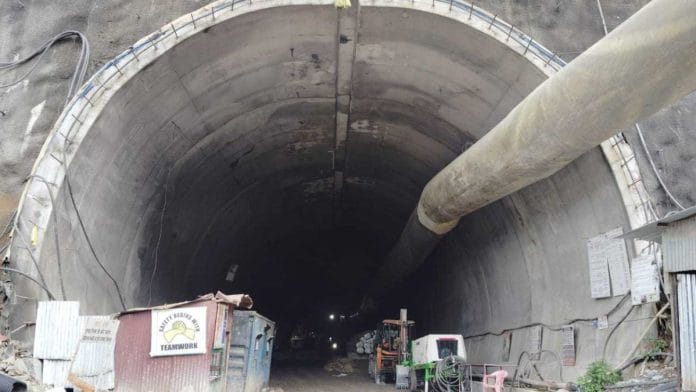New Delhi: Sanjay Basumatary is apprehensive about returning to Silkyara after the “horrific accident” nearly eight months ago. Like 31 of his fellow workers at the tunnel who took up alternative jobs after the incident, Sanjay is now engaged in farming in his village.
“I want to go to Silkyara, but my family has stopped me from returning to the ‘jaws of death’,” Sanjay, a resident of Ramfalbil village in Assam’s Kokrajhar district, tells ThePrint.
Sanjay was among the 41 workers who were trapped in the under-construction Silkyara-Barkot tunnel in Uttarakhand’s Uttarkashi for almost 17 days last November. Most of them were reluctant to return to work when construction resumed in March this year.
Only nine have so far returned to the site. These are employees of the Navayuga Engineering Company, which won the contract to construct the tunnel.
At the same time, with financial assistance from Navayuga and the Pushkar Singh Dhami-led government in Uttarakhand, many workers, like Sanjay, have embarked on new paths — farming, managing small businesses and making investments.
Sanjay recently bought six bighas of land for paddy cultivation. “Now when I work in the fields, it feels like I have finally found peace. This is how I am living life again,” he says.
At least 13 agencies had operated on a war footing to safely evacuate the 41 workers. Due to the fragile nature of the Himalayas, the 400-hour rescue operation saw many setbacks, including the breakdown of auger machines brought in to drill through the debris.
The Silkyara Tunnel is a part of the central government’s ambitious Char Dham all-weather connectivity project, which is estimated to cost around Rs 12,000 crore. The tunnel aims to reduce the distance from Uttarkashi to Yamunotri by approximately 25 kilometres.
Those trapped in the tunnel were primarily migrant workers. Of the 41 workers, two were from Uttarakhand and Assam each, one was from Himachal Pradesh, five from Bihar, three from West Bengal, eight from Uttar Pradesh, five from Odisha and 15 from Jharkhand.
According to the Migration in India 2020-21 report, based on the Periodic Labour Force Survey (PLFS) for 2020-21, released by the Ministry of Statistics and Programme Implementation (MoSPI), the total migration rate in India was 28.9 percent. For rural areas, this number was 26.5 percent.
Wedding, fixed deposits, settling old debts
After the rescue operation, the Uttarakhand government announced Rs 1 lakh as compensation for each of the trapped workers. Representatives of Navayuga Engineering Company, too, met them at AIIMS Rishikesh where they were under treatment, and handed them cheques of Rs 2 lakh each, along with a two-month paid leave.
The workers used the compensation for various purposes — performing puja (prayers), paying off old debts, buying land for farming, building houses for themselves, making fixed deposits for their children, getting married and starting businesses.

In a busy market in Bihar’s Rohtas, a small shop, owned by Sushil, adorned with puja items is a testament to a new beginning. With the compensation money he received, Sushil set up his shop, not merely to make a living, but also to stay close to his family.
Sushil, though an employee of Navayuga, chose not to go back to Silkyara.
“The earnings now are half of what I earned there, but I get to live close to my family and take care of my wife and children,” he tells ThePrint, while also dealing with customers.
For many of the trapped workers, the new life, though modest, is a safe haven.
The father of Rajendra, a construction worker from Jharkhand, says, “Returning to Silkyara was never an option. The fear of experiencing something like this again is too great. Being close to family here gives a sense of security and peace that outweighs any financial loss.”
Bishal from Mandi in Himachal Pradesh, who had joined work in Uttarkashi a few months before the accident, shares that he used his compensation money to purchase a life insurance policy and renovate his house.
He says that he might consider returning to work at the site in future.
Another worker, Bhagwan, a resident of Odisha, has opened a grocery shop back home. He used to earn Rs 15,000 a month when he was working as a labourer in Uttarkashi.
Many others have made fixed deposits for their children for future use.
While most workers used the compensation money to meet their basic needs, Biswajit’s family, in a quiet village in Jharkhand, decided to use the compensation money for a religious ritual. His wife Chameli Devi tells ThePrint that they performed a puja, which cost Rs 2 lakh, “to protect” her husband. Biswajit had to return to Silkyara after working in Jabalpur for two months since he was not getting paid there.
“Udhar jo bhi hua, uske bad suraksha jaruri tha (after what happened there, his safety was important). The thought of going back to Silkyara was very scary,” says Chameli. Another family member says, “This ritual was our way of attaining a sense of security and peace. The fear of facing another disaster was overwhelming.”
However, Raju from Odisha, who was also trapped in the tunnel, has resolved not to return and is still pursuing job opportunities within his home state.
‘Sarkar aayi, photo karai, chale gaye’
Upon being evacuated, the workers were first taken to the district hospital in Uttarkashi, and later airlifted to AIIMS in Rishikesh. From there, they were sent back to their respective native towns. At the time, many state governments had promised them houses, land, and even government jobs, but workers say some promises remain “unfulfilled”.
For instance, the Uttar Pradesh government promised houses under the Pradhan Mantri Awas Yojana and land for agriculture and animal husbandry to rescued workers who had none. Eight of them were from the state, of which seven are now farmers.
But Manjeet, a worker from Lakhimpur Kheri, who did not own any land, was the only worker allotted one acre by the state government.
“The government gave me some land for farming, but the work and house they promised never came. Officials often come, inspect and leave. There is no concrete result,” he says.
“Tab chunav ki bahar thi, adhikari aate-jate the… Ab koi puchta bhi nahi (government officials used to visit during election season… now, nobody bothers to follow up),” he adds.
Arun Mishra, the nodal officer appointed to bring the workers home, tells ThePrint, “The government fixed the criterion that those who did not have a pucca house would be given one, along with land for farming. But, during the inspection by officials, none of them were found ‘eligible’ for a house.”
Mishra adds that those from the Tharu community, predominantly involved in basket weaving and rope making, were trained in the trade of handicrafts by the Indian Bank Self Employment Training Institute, but after two months of work, all of them turned to agriculture.
In Odisha, the government had paid Rs 1 lakh each to the two workers from the state.
Of the 41 workers trapped in the tunnel, 15 were from Jharkhand alone.
Anil from Ranchi was offered a job by the labour department at a tailoring centre, a stable option compared to the uncertain nature of his previous job. But he refused it because he was being sent to a different district in Jharkhand.
“I was offered a job at a sewing centre, but it didn’t feel right to me. I wanted something that would connect me to my community and use my skills in a more meaningful way,” Anil says. The labour department called him repeatedly, but he was unwilling.
With the compensation, Anil built a pucca house for his family and invested the rest in his new business. “My family was adamant that I should not go back to Silkayara. They were very concerned about my safety and well-being. I understand their fear and that’s why I will stay here,” he says.
He adds, “Building a house was our priority. It gave us stability and a fresh start.”
Tinku from East Singhbhum in Jharkhand claims that he was promised a job by the Block Division Officer, but nothing has come of it yet.
An official in Jharkhand’s labour department, who also served as the nodal officer during the evacuation of the workers at the time, tells ThePrint, “It was our job then, we brought them back safely. What can we do now?”
The Assam government had also made similar promises to two workers, but they were left disappointed.
“The government had promised me a job, but instead I got a chai ka thela (tea cart), which is now gathering dust in our courtyard,” Sanjay tells ThePrint. “I was confident that the promise of a job would give me stability and a fresh start, but this cart has not just failed to bring in any income, but also increased the burden on my family.”
The Assam nodal officer for the evacuation operation says that he is no longer associated with the scheme and does not know anything about it.

Sushil from Bihar, who is now a shop owner, says, “Sarkar aayi, photo karai, gamchha diya, chale gaye (the politicians in government came, gave us scarves, took pictures with us and left). Now, the issue isn’t even highlighted anymore. I had been working in the tunnel since 2018 and our chief minister has done nothing for us.”
ThePrint reached the Bihar government nodal officer via calls and messages, but there was no response.
‘Need to feed our families’
As for the nine workers who have returned to Silkyara, they say they could not find work anywhere else and have to work at the tunnel to “feed our families”.
The work of clearing debris, cemented by grafting and divided into three parts, is currently underway at the tunnel, they add.

On the instructions of the Union Ministry of Road Transport and Highways, construction work of protective nature had begun from both the Barkot and Silkyara ends of the tunnel in January this year.
“The 58 cm of debris that fell from Silkyara side has been divided into three parts, with 40 cm of debris being removed from right side and up to nine metres of work being done on the left side,” Saba Ahmed, a worker from Bihar tells ThePrint.
Ahmed has been in Uttarkashi since March.
“The pipe used to evacuate workers is now being used to move in and out of the tunnel,” says a worker from Uttar Pradesh, while on his way to the mess after his night shift.
In Silkyara, many believe the tunnel collapsed due to the “wrath” of Baba Boukhnag — a local deity whose temple was demolished for the construction. After initial rescue attempts had failed in November, priest Ganesh Prasad Bijalwan was asked by Navayuga Engineering Company to perform a special puja. Now, a new temple being built at the tunnel’s mouth.

Company officials are actively engaged in addressing mental and emotional well-being of the workers who tell ThePrint that more precautions are being taken now than earlier.
“We are now prohibited from staying in the tunnel for long. We only work on the outer parts,” says one.
An official of the National Highways and Infrastructure Development Corporation Limited (NHIDCL) confirms that the work in the tunnel will not be completed this year. On the condition of anonymity, he tells ThePrint, “There are some problems in every project and the company will complete the work soon in collaboration with the workers.”
Ahmed, who has been working at the project site since 2018, says that his family thinks that he works on the bridge, when in reality, he works in the tunnel. “Whenever I get a call from my family members, I go out and answer, so that they are not disturbed.”
Birendra from Bihar, who is back in Uttarkashi, tells ThePrint, “It took a lot of time to convince my wife. My work is related to machinery. There is risk everywhere.”
He adds, “Now my wife has the contact of the human resources team. So the family members do not worry as much.”
Sonu from Bihar says, “It was a bit difficult to convince my parents, but we have to do it to support the family. If we do not earn, what will we eat?”
(Edited by Mannat Chugh)
Also Read: Don’t delay J&K polls, announce timeline for restoration of statehood — human rights panel report






